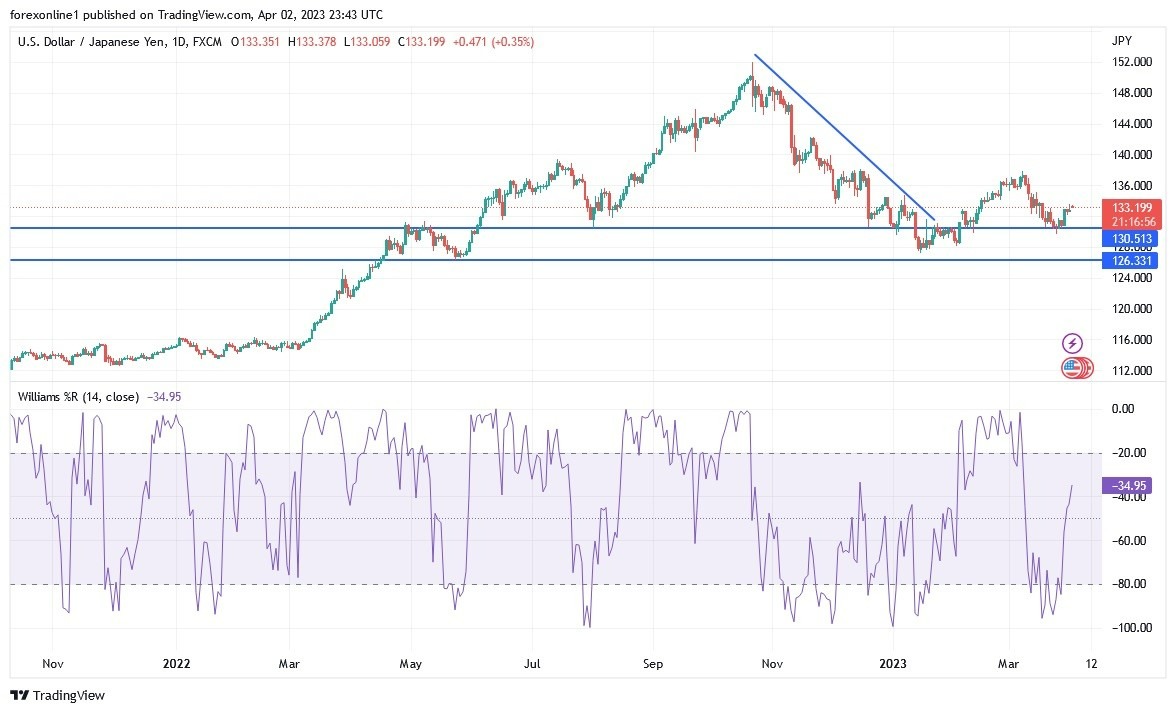- Last week's trading was generally bullish for the performance of the price of the USD/JPY currency pair, amid investors' abandonment of the Japanese yen.
- The currency pair's gains reached the resistance level at 133.60, its highest in two weeks, and closed the week's trading around the level of 132.80, affected by the results of the important US economic data.
- The US Federal Reserve's preferred measure of inflation fell more than expected in the latest update, limiting a corrective bounce in the dollar.
Accordingly, the dollar's exchange rates fell from their highest levels during the day. The pound, the euro, and other currencies rose on Friday after the Bureau of Economic Analysis said that the core US personal consumption expenditures price index rose by 0.3% last month, to record only an increase of 4.6% in February. The consensus among economists was looking for a 0.4% increase in February to keep the annual pace of core personal consumption expenditures inflation unchanged at 4.7%, although broad and noteworthy declines in the pace of price increases across categories gave a weak result on the day.
Durable goods inflation turned negative in February and non-durable goods inflation more than halved. More important for Fed policymakers was likely to be a halving in service price inflation and declines in the cost of food, energy commodities, and energy services.
All of these developments suggest the Fed is making progress in its efforts to push the headline personal consumption expenditures price index. The index fell from 5.3% annually to 5% in February, to a target of 2%, but some economists say they won't necessarily prevent another increase in the price. interest rates next month.
Katherine, the economist at CIBC Capital Markets, says that the “This data shows some signs of consumers responding to higher rates. The downside surprise in core PCE is a welcome development for the Fed, although the pace of the monthly increase is still very fast. It does not meet the inflation target.
The US Federal Reserve raised its interest rate to between 4.75% and 5% last Wednesday. Expectations are that FOMC members saw only one additional increase as necessary due to the impact of the recent failure of Silicon Valley Bank and others. For his part, US Central Bank Governor Jerome Powell said at the press conference that stricter lending standards and less availability of credit are likely to hamper the economy and reduce inflation to an unknown extent in the coming months. The Fed's entertainment of "credit tightening" by tightening interest rates has been negative for the US dollar and probably because it deprives the dollar of additional or better-sustained increases in bond yields.
USD/JPY Technical Outlook:
In the near term, according to the performance on the hourly chart, it appears that the USD/JPY currency pair is trading within a bearish channel formation. This indicates a significant short-term bearish bias in market sentiment. Therefore, the bears will be looking to ride the current wave of declines toward 132.423 or below to support 132.061. On the other hand, the bulls will target potential rebounds around 133.109 or higher at the 133.489 resistance.
In the long term, and according to the performance on the daily chart, it appears that the USD/JPY pair has recently completed an upward breach from the descending channel formation. This indicates a significant change in market sentiment from bearish to bullish. Therefore, the bulls - the bulls - are looking to extend the current rebound towards the resistance at 135.091, or higher, to the resistance of 137.171. On the other hand, the bears - bears - will look to pounce on profits at around 130,644 or below at the 128,420 support.

Ready to trade our Forex daily forecast? We’ve shortlisted the best Forex brokers in the industry for you.

